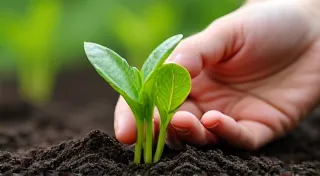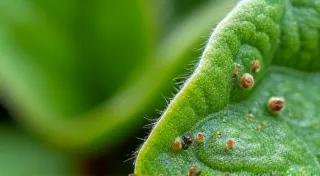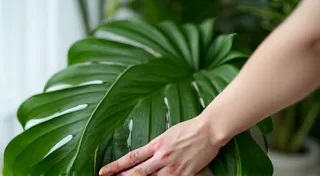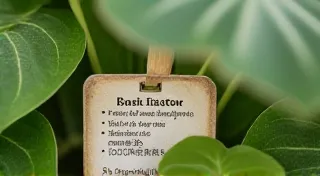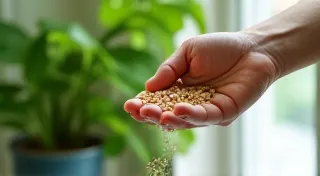Watering 101: Avoiding Overwatering and Underwatering Your Houseplants
Watering is arguably the most critical – and often most confusing – aspect of plant care. Many new plant owners struggle with knowing when and how much to water their houseplants, leading to either overwatering or underwatering. This article tackles those common pitfalls, offering practical advice for determining your plants’ needs and fostering healthy growth. Before you even begin, though, understanding the basics of caring for houseplants is essential, and our ultimate watering guide for new plant parents offers a fantastic starting point.
Why Watering is So Tricky
Unlike outdoor plants that rely on rainfall and drainage, houseplants are entirely dependent on you for hydration. The needs of different plant species vary wildly, and factors like pot size, soil type, and environmental conditions all influence how often your plants need water. Understanding these nuances is the key to successful plant care. Different plant types also have different soil needs. For instance, succulents and cacti require a very different soil mix than ferns, and frequently repotting is part of that process.
Recognizing the Signs: Are You Overwatering or Underwatering?
Before reaching for the watering can, learn to read your plants' signals. Here's what to look for:
Signs of Overwatering:
- Yellowing Leaves: Often starting with lower leaves, yellowing can indicate root rot caused by excessive moisture. This is exacerbated by soil that doesn’s drain well, which is another thing you’ll address when you’re repotting your plants.
- Drooping Leaves: While drooping can also be a sign of underwatering, persistent drooping despite seemingly adequate moisture points towards overwatering.
- Mushy Stems: Soft, mushy stems are a serious sign of root rot.
- Fungus Gnats: These tiny flies thrive in consistently moist soil and are a common indicator of overwatering.
- Standing Water: If water consistently pools on the soil surface, you're likely overwatering.

Signs of Underwatering:
- Dry, Brittle Leaves: Leaves that are crispy or brown, particularly at the edges, often mean your plant isn't getting enough water.
- Curling Leaves: Leaves may curl inwards to conserve moisture.
- Wilting: Leaves and stems droop dramatically.
- Dry Soil: The soil feels hard and pulls away from the pot’s sides.
How to Determine When to Water
Forget rigid schedules! Instead, check the soil moisture. The soil mix you use significantly influences how quickly the soil dries out. A well-draining potting mix helps prevent overwatering, which is why you may want to consider repotting your plants if you're struggling with soggy soil.
The Finger Test:
The simplest method! Stick your finger about an inch or two into the soil. If it feels dry, it's time to water. If it feels moist, wait.
Moisture Meters:
For those who prefer a more precise measurement, a soil moisture meter can be a helpful tool.
Watering Techniques & Tips
The how of watering is just as important as the when.
Water Thoroughly:
When you do water, water deeply until excess water drains from the drainage holes. This ensures the entire root ball gets hydrated.
Empty Saucers:
Always empty excess water that collects in the saucer beneath the pot. Standing water can lead to root rot. Regular cleaning of saucers is also a good practice to prevent algae growth.
Water Quality:
While tap water is usually fine, letting it sit out for 24 hours allows chlorine to evaporate. Some plants (like ferns) prefer rainwater or distilled water. For some sensitive plants, the minerals in tap water can actually cause problems. This is another factor to consider when you are researching the specifics of caring for individual plants. It’s also something to think about when considering how frequently you need to clean your houseplants.

Adjusting Your Watering Schedule
Plant needs change with the seasons and depend on their specific requirements.
Seasonal Changes:
Plants typically need less water in the cooler months (fall and winter) when their growth slows down. Increase watering during the warmer, growing season (spring and summer). This shift in watering frequency is also tied to the plant's natural dormancy period. Understanding these cycles is key to keeping your plants thriving.
Plant-Specific Needs:
Research your plants! Succulents and cacti thrive on infrequent watering, while ferns prefer consistently moist soil. The ideal soil conditions vary greatly depending on the plant's origin and how it obtains nutrients in its natural habitat.
Troubleshooting Common Watering Problems
Here’s a quick guide to fixing common issues.
Overwatering Correction:
- Stop watering immediately.
- Ensure good drainage. This may involve amending the soil or choosing a pot with better drainage holes.
- Consider repotting with fresh, well-draining soil. A chunky soil mix composed of materials like perlite, orchid bark, and coconut coir helps improve aeration and drainage.
Underwatering Correction:
- Water thoroughly, allowing the soil to rehydrate.
- Consider soaking the pot in a basin of water (bottom watering) to ensure complete saturation. This method is particularly helpful for plants with dense root systems that may not readily absorb water from the surface.

Beyond Watering: Holistic Plant Care
While mastering watering is essential, remember that healthy plant growth is a result of overall care. This includes providing adequate light, fertilizing appropriately, and addressing any pest or disease issues promptly. Maintaining clean leaves also contributes to a plant's health, as leaves need to be able to photosynthesize. Remember to clean your houseplants regularly to maximize their light absorption capabilities.
Final Thoughts
Mastering plant watering is a journey, not a destination. Pay attention to your plants, observe their signals, and adjust your approach as needed. With a little practice, you'll be a watering pro in no time! Don’t be afraid to experiment and learn from your observations – your plants will reward you with vibrant growth and beauty.
